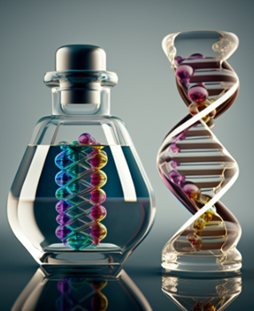Perfume, an enchanting blend of art and science, has captivated humanity for centuries. From ancient times when scents were extracted using rudimentary methods, the perfume industry has evolved dramatically, leveraging cutting-edge technology to create increasingly sophisticated and alluring fragrances. This article delves into the intricate process of perfume production, highlighting the pivotal role of technology in every stage, from sourcing raw materials to the final product.
1. Sourcing and Harvesting Raw Materials
The journey of a perfume begins with the careful selection and procurement of raw materials. These can be categorized into botanical, animalic, and synthetic sources. Botanical ingredients, such as roses, jasmine, lavender, and sandalwood, are often cultivated in specific regions known for their unique aromatic profiles. Animalic ingredients like musk and ambergris were once popular but have been largely replaced by synthetic alternatives due to ethical concerns.
Technological Advancements: Modern technology has revolutionized the sourcing process. Drones equipped with advanced sensors can now monitor crops and determine the optimal harvest time, ensuring that only the finest quality materials are used. Additionally, the development of synthetic ingredients has expanded the palette of available scents and reduced our reliance on natural resources.
2. Extraction Techniques
Extracting essential oils from raw materials is a critical step in perfume production. Traditional methods like steam distillation, cold pressing, and solvent extraction have been refined and augmented by new technologies:
- Steam Distillation: This age-old technique remains a cornerstone of essential oil extraction. Modern distillation equipment offers precise temperature and pressure control, resulting in higher-quality oils.
- Cold Pressing: Particularly suited for citrus fruits, cold pressing has benefited from advancements in machinery, leading to increased efficiency and reduced oxidation.
- Solvent Extraction: Used for delicate flowers like jasmine and tuberose, solvent extraction has been made safer and more environmentally friendly through the use of advanced solvents and recovery systems.
- Enfleurage: While a historic method, enfleurage can now be accelerated using modern solvents and techniques.
3. Formulation and Creation
Perfume creation is a blend of art and science. Perfumers carefully combine essential oils to create harmonious and evocative fragrances. The composition typically includes top, middle, and base notes, each contributing to the overall scent profile.
Technological Advancements: Computer-aided fragrance design software allows perfumers to simulate and analyze fragrance compositions, speeding up the creative process and ensuring a balanced and harmonious blend.
4. Aging and Maturation
After formulation, perfumes undergo an aging process, allowing the components to meld and create a more complex and nuanced fragrance.
Technological Advancements: Temperature-controlled aging tanks and ultrasonic technology can accelerate the aging process without compromising the quality of the fragrance.
5. Filtration and Bottling
Once aged, perfumes are filtered to remove impurities and then bottled. The bottling process is highly automated, ensuring consistency and minimizing contamination.
Technological Advancements: Advanced filtration systems and high-speed bottling lines enhance efficiency and product quality.
6. Quality Control
Rigorous quality control is essential to maintain the integrity of a perfume. From raw material testing to finished product analysis, every step is scrutinized.
Technological Advancements: Gas chromatography-mass spectrometry (GC-MS) and other analytical techniques provide precise measurements of a perfume’s chemical composition, ensuring purity and consistency.
7. Packaging and Design
The final stage involves packaging the perfume in an aesthetically pleasing container that reflects the brand’s identity.
Technological Advancements: 3D printing technology has revolutionized bottle design, allowing for highly customized and intricate shapes.
